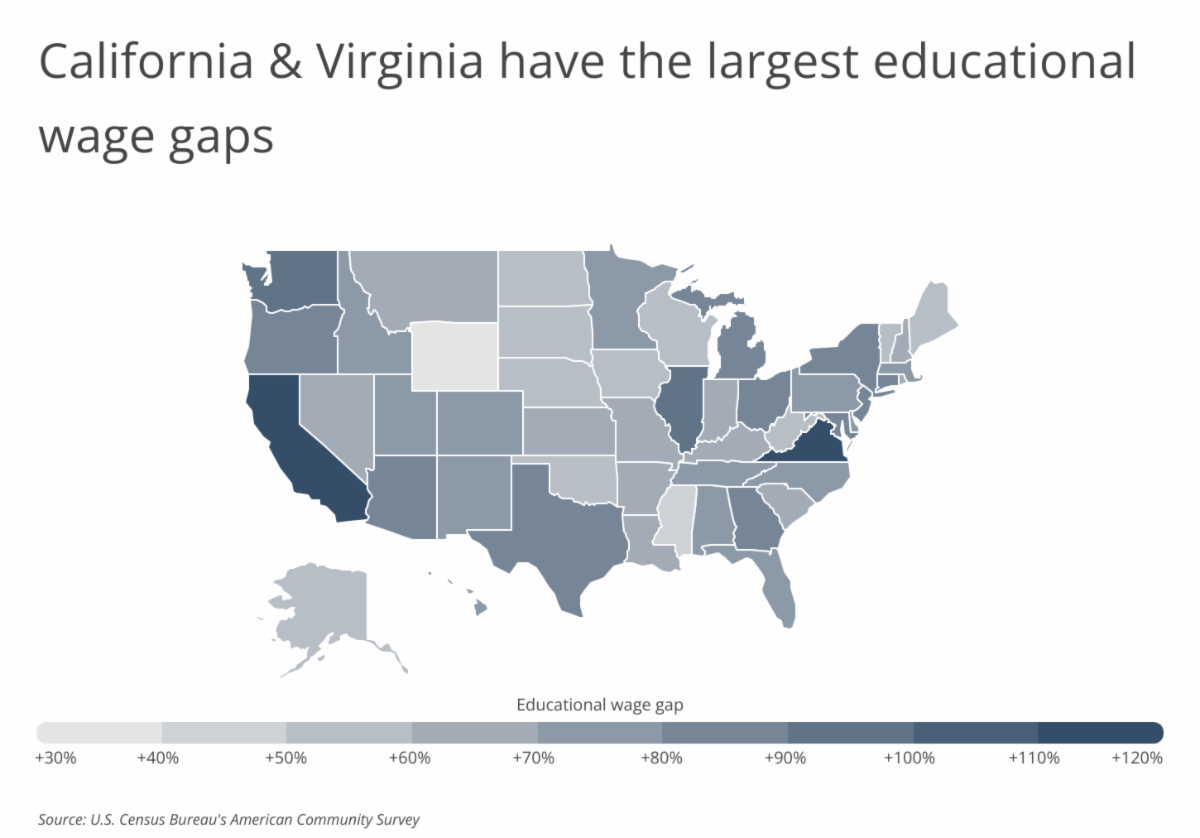While recent economic trends have encouraged companies to relax degree requirements as a way to attract more workers, for the last several decades higher education has been tightly coupled with economic opportunity in the U.S.
Unemployment rates tend to be lower for people with greater educational attainment, and wages tend to be higher. According to the Bureau of Labor Statistics, the median weekly earnings for workers with a high school diploma total $809, but for college degree holders that figure is $1,334, while those with professional degrees earn $1,924 per week.
But college education comes at a cost, and students in recent decades have struggled with rising tuition and fees. According to data from the College Board, inflation-adjusted tuition and fees for a public four-year college are 2.25 times higher than they were three decades ago, while private nonprofit four-year colleges cost 1.8 times more. This trend has only begun to slow in the past few years as colleges face declining enrollment in the face of greater questions about the value of higher education and a shrinking college-age population.

Historically, students’ belief in future economic returns on their education has mostly outweighed concerns over rising costs. In 2000, the share of Americans 25 years and older with bachelor degrees was 25%. Bachelor’s degree attainment in the U.S. has grown steadily since the turn of the century, and today, 35% of the 25-years-and-older population has their bachelor’s degree.

The importance of education for economic opportunity has become even clearer as gaps in earnings between more- and less-educated workers have grown over time. In inflation-adjusted dollars, professional degree holders have seen median wage growth of more than 15% since the year 2000. Bachelor’s, master’s, and doctorate degree holders have also seen modest growth in real dollars over the same span. But for high school graduates, real median annual wages have declined by 4.1% since the beginning of the millennium. Professional degree holders earned 2.5 times as much as a high school graduate in 2000, but earn 3 times as much now.

The gap between high school graduates and people with higher levels of education also varies across geography. Many locations with economies that rely heavily on professional fields have the greatest educational wage gaps, in large part because the share of the population with higher education tends to be greater. Topping the list of states with the largest educational wage gaps are California (+113.3%) and Virginia (+112.5%), where the typical college graduate earns more than twice what the typical high school degree holder does. In both states, the share of workers with college degrees exceeds the national rate. In contrast, states with smaller gaps, like Wyoming (+31.3%) and Mississippi (+47.1%), have college attainment rates well below the national average.
In addition to leading the U.S. at the state level, California’s cities also display some of the largest gaps between earnings for high school and college graduates. Five of the 15 large metropolitan areas with the greatest educational wage gaps are found in California, led by the San Jose metro. With nearly two-thirds of the population holding a college degree and boosted by well-paying Silicon Valley jobs, college graduates in San Jose earn 180% more than high school graduates.
The data used in this analysis is from the U.S. Census Bureau. To determine the locations with the largest educational wage gaps, researchers at Smartest Dollar calculated the educational wage gap as the percentage difference in median annual wages for college graduates (including advanced degree holders) and high school graduates only. Wages were calculated for full-time workers, and in the event of a tie, the location with the greater median annual wage for full-time college graduates was ranked higher.
The analysis found that college graduates working full-time in Georgia earn a median annual wage of $72,000, while full-time high school graduates earn a median $39,000. Overall, Georgia has the 11th largest educational wage gap in the United States. Here is a summary of the data for Georgia:
-
Educational wage gap: +84.6%
-
Median annual wage for full-time college graduates: $72,000
-
Median annual wage for full-time high school graduates: $39,000
-
Percentage of full-time workers with college degrees: 43.2%
For reference, here are the statistics for the entire United States:
-
Educational wage gap: +95.0%
-
Median annual wage for full-time college graduates: $78,000
-
Median annual wage for full-time high school graduates: $40,000
-
Percentage of full-time workers with college degrees: 43.9%
For more information, a detailed methodology, and complete results, you can find the original report on Smartest Dollar’s website: https://smartestdollar.com/research/cities-with-the-largest-educational-wage-gaps-2023
|
|
|





